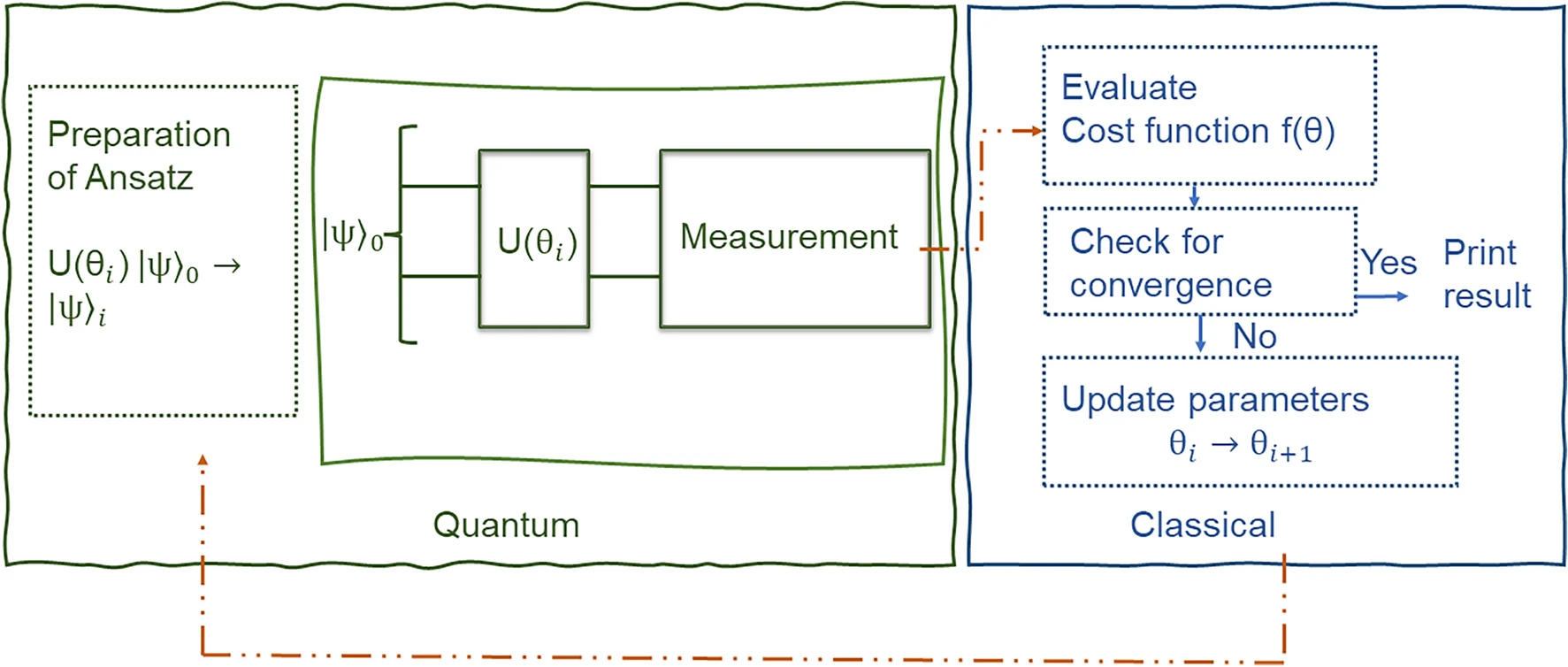Quantum computing, which emerged in the 1980s, is currently in the Noisy Intermediate Scale Quantum (NISQ) era, where quantum computers contain a few dozen qubits and can perform a similar number of operations before noise erases all information. Despite advancements, quantum computers will likely be limited to short, simple tasks for the foreseeable future. Ijaz Ahamed Mohammad, Matej Pivoluska, and Martin Plesch propose a meta-optimization procedure for hybrid quantum-classical algorithms to optimize resource usage. The procedure is demonstrated on a variational quantum algorithm used to find the ground state energy of a hydrogen molecule.
What is the Current State of Quantum Computing?
Quantum computing, a concept that emerged in the 1980s, is currently in the Noisy Intermediate Scale Quantum (NISQ) era. This term refers to the fact that available quantum computers contain a few dozen qubits and can perform a similar number of operations before noise erases all information encoded in the calculation. Despite rapid technological advancements, the use of quantum computers will likely be limited to short and simple tasks that serve as subroutines of more complex classical procedures for the foreseeable future. Even for these applications, resource efficiency, measured in the number of quantum computer runs, will be a key parameter.
The authors of the article, Ijaz Ahamed Mohammad, Matej Pivoluska, and Martin Plesch, suggest a general meta-optimization procedure for hybrid quantum-classical algorithms. This method optimizes the usage of resources of an existing method by testing its capabilities and setting the optimal resource utilization. They demonstrate this procedure on a specific example of a variational quantum algorithm used to find the ground state energy of a hydrogen molecule.
How Did Quantum Computing Evolve?
Quantum computers were first suggested as a theoretical concept in the 1980s by Paul Benioff and Yuri Manin. The potential of quantum computers to outperform classical computers in certain tasks was thoroughly studied over the next 30 years. Many important quantum algorithms were discovered, including an algorithm to factorize large numbers in polynomial time and an algorithm for a fast search in unstructured databases.
In recent years, experimental quantum computing has achieved significant advances. The design of quantum algorithms has shifted from purely theoretical research towards more practical questions. One of the main new areas of research is the practical utilization of contemporary quantum processors, which are encumbered by noise that reduces their reliability. These are called Noisy Intermediate-Scale Quantum (NISQ) computers. To utilize them efficiently, many variational algorithms have been designed. These algorithms use both quantum and classical computational resources.
What are the Challenges in Quantum Computing?
The combination of classical and quantum approaches in variational algorithms leads to many interesting challenges. The accuracy and reliability of the final output are inevitably limited by a combination of different factors. First, the classical optimization algorithm is not guaranteed to converge to the true minimum. Many optimization algorithms are stochastic by nature and use randomness at least during initialization to choose the starting point. In many scenarios, randomness is required in each iteration. This randomness ensures that the optimization procedures can deal with a large family of different functions without getting stuck in a local minimum. However, it also leads to the stochasticity of the whole calculation, meaning the algorithms are not guaranteed to succeed. Thus, for obtaining a useful result with high probability, the procedure needs to be repeated several times.
Secondly, even in the noiseless quantum processor scenario, the outcome of any useful quantum computation is stochastic. Typically, the outcome is a non-computational basis state, and is characterized by frequencies of outcomes for different measurement settings. A single run of a quantum computer only provides a single snapshot of the state for one measurement setting. Any optimization procedure, therefore, inevitably comes with a tradeoff between a more precise measurement on a single position in the parameter space and less precise measurements of many positions. It is nontrivial to decide which of these two strategies leads to better results.
How Does Noise Affect Quantum Computing?
One cannot rely on any kind of error-correcting procedures for NISQ computers. The classical procedure itself will have to account for the fact that any result of the quantum computer is influenced on top of the statistical fluctuations due to the intrinsic quantum randomness also by experimental errors. All these complications suggest that the classical procedure will have to go significantly further than just utilizing known optimization methods. For any near-future hybrid algorithms, the main limiting factor will be the quantum part. Both from the time queues and financial pay-per-shot perspective, the efficiency of the algorithm will be measured by its ability to produce good results with as little utilization of quantum computers as possible.
This generic statement can be simplified into a measure relating the reliability and precision of the result, the probability to get a result, and how good the result is to the number of utilizations of a quantum computer with a single run. This measure is crucial in the current state of quantum computing, where resources are limited and noise is a significant factor. The authors’ proposed meta-optimization procedure aims to address these challenges by optimizing the usage of resources of an existing method.
Publication details: “Meta-optimization of resources on quantum computers”
Publication Date: 2024-05-05
Authors: Ijaz Ahamed Mohammad, Matej Pivoluska and Martin Plesch
Source: Scientific reports
DOI: https://doi.org/10.1038/s41598-024-59618-y

